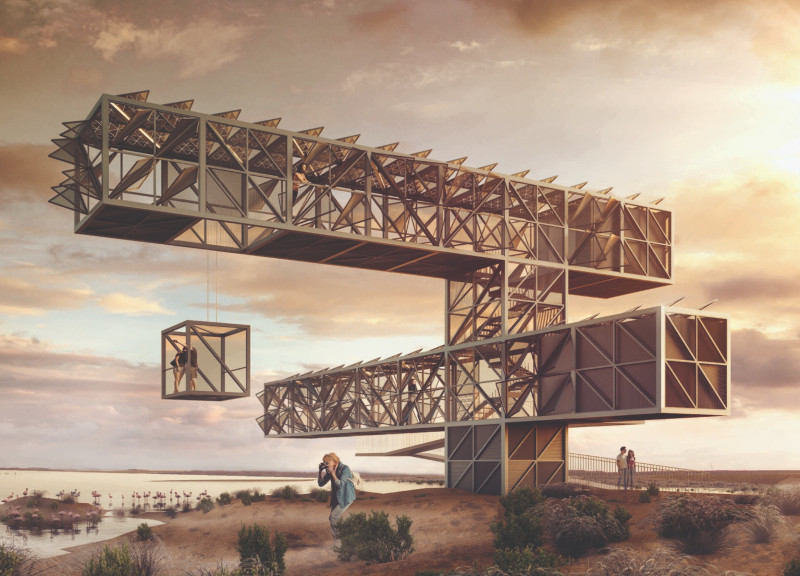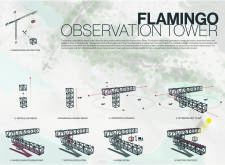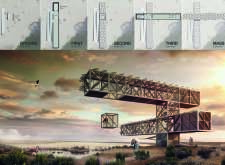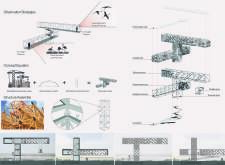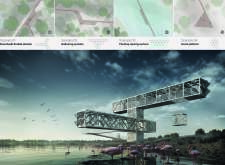5 key facts about this project
The Flamingo Observation Tower is located in Abu Dhabi, designed to enhance the observation of local flamingo populations. It takes advantage of existing steel construction cranes, reimagining them as part of a modular structure. The design provides expansive views and immersive experiences for visitors, aiming to foster a deeper connection with the wildlife surrounding it.
Design Concept
The tower’s design emphasizes modular construction, allowing for various components to be assembled into a cohesive structure. This strategy not only ensures efficiency but also creates opportunities for future growth. The intention is to establish a network of observation points that enhances the experience of those who visit to observe the flamingos and their habitat.
Sustainability Features
Sustainability plays a key role in the tower’s design, particularly through natural ventilation strategies. The layout supports airflow, which helps reduce reliance on mechanical cooling systems, leading to lower energy use. Additionally, the photovoltaic skin captures solar energy to meet the tower’s energy demands, reinforcing a commitment to environmental responsibility.
Functional Integration
The design includes several spaces that serve different visitor needs. There is a souvenir shop, an audio/visual room, a technical room, and a mobile room. Each area is positioned to create an inviting flow throughout the tower, enhancing visitor experience while providing educational insights about the flamingos and their environment.
Observation Strategies
Two distinct platforms offer differing observation opportunities: a three-meter platform for close-up interactions with the land and a nine-meter platform for broader views of the horizon. This arrangement encourages diverse engagement with the surrounding landscape. Additionally, the design features flexible boardwalks, gathering spaces, and floating viewing surfaces, all of which add to the tower’s functionality.
As the tower rises, it incorporates shading devices inspired by traditional desert tents. These elements provide protection from the sun and dust, enhancing user comfort while integrating with the cultural context of the region.


